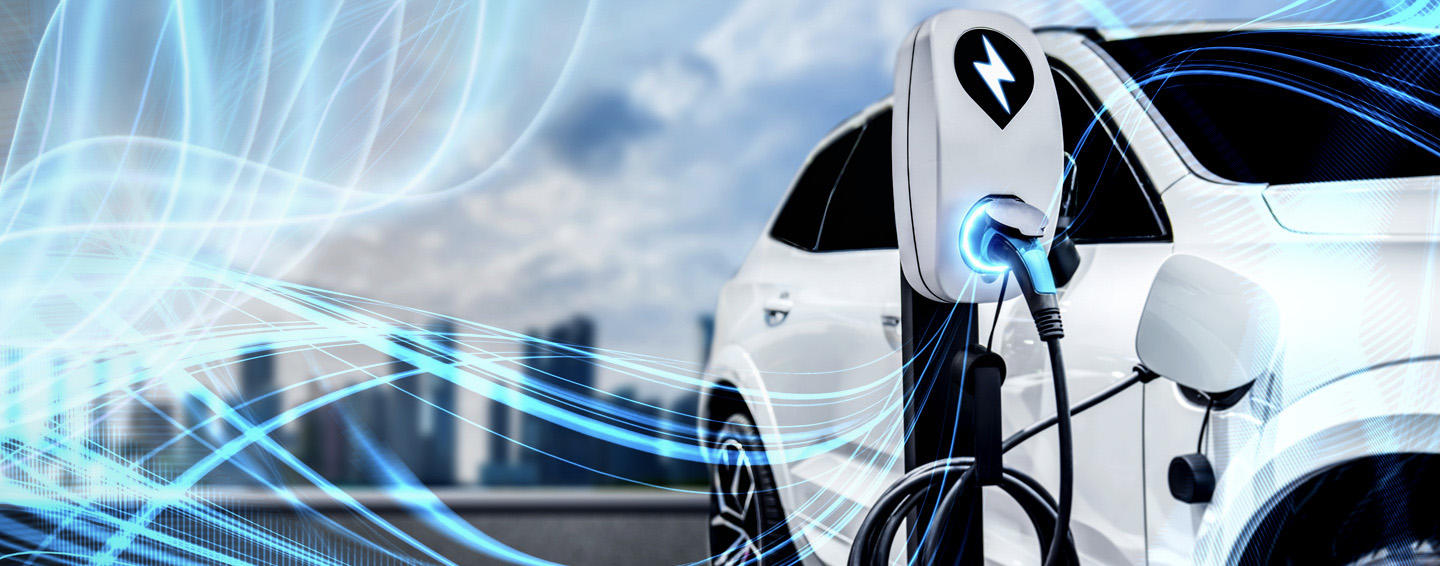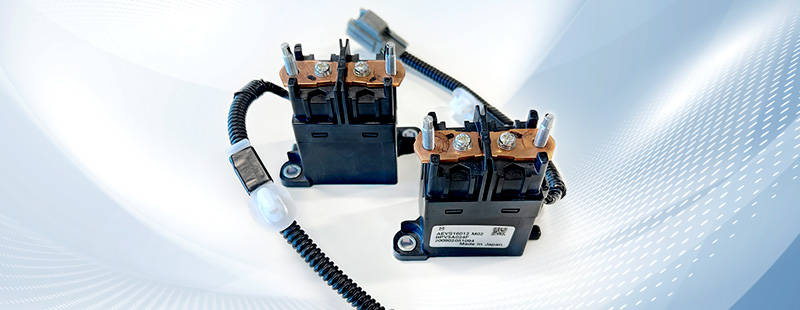
Preparing for a greener future
The future of automotive is electric. At Panasonic, we're helping our OEM partners make the transition to cleaner, more sustainable vehicle technology.
The transition to vehicle electrification is upon us. Consumer demand for EVs is on the rise, and governments across the world have begun mandating a phase-out of fossil fuel-powered vehicles over the coming decades. OEMs are responding to these trends – and working towards their own sustainability goals – by investing heavily in electric vehicle technologies.
Panasonic is collaborating with OEMs to turn these goals into a reality. Our expertise spans many areas of vehicle electrification, and we're passionate about empowering our partners to expand and improve upon their EV offerings.
EV Components
Panasonic is a global supplier of the critical components driving the transition to electric vehicles. With vast engineering and manufacturing capability at our disposal, we’re able to quickly tool up and produce custom componentry at scale that helps our customers design and build better cars.
As one of the world’s leading supplier of high-capacity, high-voltage relays, our teams are able to pivot and meet the unique needs of our OEM clients. Anticipation of our customers’ future needs inspires our innovations, engineering relays at increasingly higher amperages in smaller packages.
We also supply most of the world’s DC-link capacitors that power EV inverters. Like our relays, we continue to make our capacitors smaller, employing ultra-thin, voltage-resistant polypropylene film which in turn enables our OEM partners to reduce inverter size and weight – all while offering unparalleled reliability: We’ve produced tens of millions of capacitors with zero returns.
Additionally, Panasonic’s global footprint serves our partners in non-traditional ways. As we continue to expand our manufacturing capacity throughout North America, we’re reducing lead times for our local customers while eliminating an extra layer of cost in the way of tariffs. Further, it helps our partners satisfy locally manufactured content requirements that often underpin government-backed incentives eligibility.
Our customers understand that partnering with Panasonic means buying into a long history of innovation, technology and reliability. They can always expect high quality solutions with the ability to scale up to meet your delivery requirements with no growing pains to overcome.
Noise Management Solutions
Electric vehicles present unique sound-management challenges posed by the lack of Internal Combustion Engine (ICE) noise. Rather than a parallel technology to ICE-powered vehicle sound management, Panasonic understood early on that electronic sound synthesis (ESS) for EVs represented a new paradigm requiring the application of entirely new technologies.
Our EV noise management systems target the higher-frequencies emitted by EVs which become more conspicuous without competing ICE-generated noise. These sounds include HVAC fan noise, air blowing through ducts and outside wind – noise that’s difficult to mitigate with traditional ANC technology methods. Panasonic leverages proprietary psycho-acoustic masking technology in the design and manufacture of the specialized hardware required to hide higher frequency noise with synthesized “crafted” sound – the EV equivalent of white noise.
EV Electronic Sound Synthesis
Sound management in EVs is not simply about noise reduction. The absence of engine noise presents its own set of problems: Sound generated by ordinary vehicle functions seems more pronounced, drivers are deprived of audible clues that intuitively modulate how we accelerate and brake and, perhaps most importantly, pedestrians don’t receive sufficient warning when an EV is operating in dangerous proximity.
The efforts to mitigate these problems has spawned an entirely new EV-specific field and given birth to Panasonic Electronic Sound Synthesis (ESS). Working with our OEM EV partners, we employ sensor fusion technology deployed in on-board systems that synthesize a variety of sounds that provide drivers with audible feedback in response to specific inputs – from how hard the vehicles is accelerating based on engine “noise,” to how quickly it’s slowing and also external sound warnings for pedestrians.
Lightweight, low-power audio systems
When it comes to automobile componentry, EV manufacturers face unique challenges. The size, weight and electrical consumption of components is especially critical as audio, HVAC, heated seats, lighting, etc. consume electricity that could otherwise extend vehicle range. Similarly, every ounce of additional weight consumes battery power by forcing the drivetrain to push a heavier load. Panasonic places an emphasis on designing and manufacturing EV-specific audio systems that are remarkably lighter, smaller and more energy efficient than conventional systems yet still exceed industry benchmarks for sound quality with lower harmonic distortion, increased power and enhanced bass extension.


